Protecting your home is more manageable with the ever-evolving CCTV surveillance cameras.
Homeowners secure their homes with private surveillance cameras on their premises to prevent crime, monitor movement, and stay informed of happenings around their house.
Understanding a surveillance system
Closed Circuit Television an advanced system of surveillance cameras used in premises to record activities of people coming in and going out or in particular areas.
The characteristics of a surveillance system influence the capacity of the system to meet its purposes.
They are remarkably useful when it comes to preventing intruders and catching questionable activities.
The need for surveillance systems
To ensure the overall safety and protection, video surveillance and security cameras are necessary.
Here’s a list of reasons for owing your own home security camera system:
- Security cameras at correct positions can prevent crimes and burglary.
- A security camera system provides peace of mind making you aware of the happenings inside your property whether you are there or not.
- Security cameras help observe children's activities in the house and outside in case they wander off. One can keep a check on pets too.
- In the event of a burglary, security cameras will have recordings in high-definition. These videos and images are useful to arrest the culprit, deter future crimes, and restore items.
- The high-resolution security camera comes into action when claiming insurance. With the help of footage, one can easily document the event, which can help speed up an insurance claim.
Security surveillance systems have an exceeding amount of great features to assure maximum safety.
However, there are several types of surveillance systems available in the market.
These types vary according to the way the security system transmits and records data, the camera style, and some other aspects.
Getting to know the different types of CCTVs surveillance systems
This is going to provide a deep insight into the various types of CCTVs available according to different aspects.
Which camera is right for your home according to needs is something that only you can determine.
With the help of this guide, your decision will become more manageable.
Let me start with the initial criteria, which are broadly used to categorize CCTV surveillance systems into two types.
Wired surveillance systems:
As evident from the name, wired security, these systems need cables for power, internet connection, and video communication.
A cable runs from the camera to a recorder. The cable then connects to your router.
The wired security system is powered, either with a separate power cord or with one Power Over the Ethernet (POE) cable.
POE-enabled systems use one cable that gives both power and internet connection.
Wireless security systems:
Wireless systems strive to handle the vital downside to a wired security camera system, which is installation.
The main distinction between a wired and wireless security surveillance system is that security footage is communicated wirelessly from the camera to the recorder.
Here’s some other features of surveillance systems worth considering:

IP cameras:
Internet Protocol surveillance systems transfer image data through the internet.
These cameras allow you to view your CCTV feed from anywhere in the world.
IP surveillance systems are great for their high-quality pictures and easy installation.
Analogue cameras:
Analogue surveillance systems have overall inferior quality than IP cameras. However, they function better in low light situations.
Analogue cameras also have a lower site range than IP cameras. They don’t allow the zoom-in accuracy like IP surveillance cameras.
Analogue versus IP surveillance systems
- IP surveillance systems give 6 to 20 times greater resolution than analogue cameras.
- Analogue surveillance systems require cabling whereas IP surveillance systems do not.
- IP surveillance systems are more expensive than analogue cameras.
The winner? In my view, despite the extra cost, IP surveillance systems are the better option.
Understanding the different types of cameras:
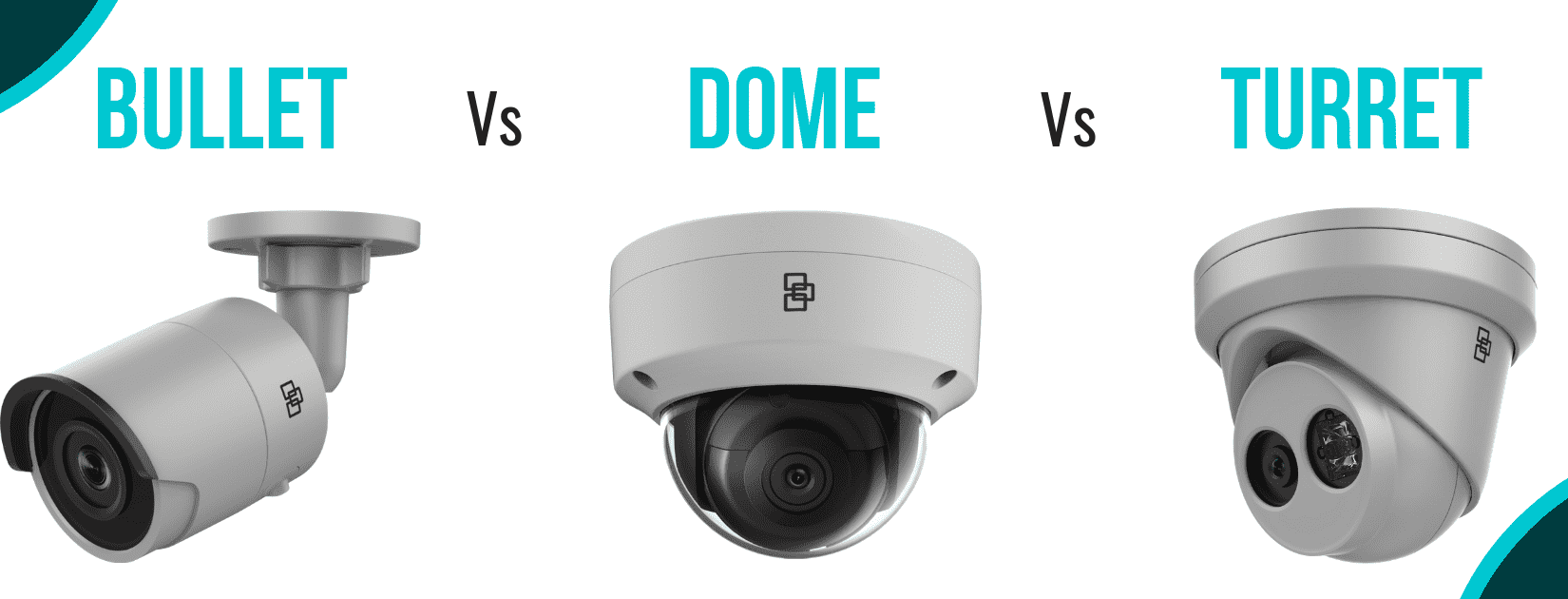
There are several types of surveillance cameras categories. These include the bullet, dome, turret, and PTZ cameras.
Bullet cameras:
Bullet cameras are the most popular home surveillance cameras on the market.
Bullet cameras are affordable and easily visible in most cases. This makes them great for deterring intruders.
They are usually wall-mounted, making them useful for narrow corridors and areas such as doors or sections of a patio.
Bullet cameras are suitable for indoor or outdoor use, during day or night.
Source: https://securitybros.com/articles/bullet-cameras-vs-dome-cameras/
Dome CCTV cameras:
Dome cameras are also obvious to recognize, but the direction they face is not easy to guess.
Dome cameras can, and are in most cases, wireless, just like bullet cameras.
Since they are ceiling-mounted, they are also hard to reach.
These features make them beneficial for widespread surveillance.
Turret cameras:
Turret cameras rotate freely as the base is mounted.
Turret cameras allow you to view multiple directions with a single camera.
These cameras have a more powerful night vision.
They are not usually wireless.
They are preferable for indoor use.
PTZ cameras:
These cameras can pan (side-to-side), tilt (up and down), and zoom (in and out), and so the name PTZ.
These look similar to a dome camera.
The head is on a special frame, on which they can rotate and move.
The optical element can zoom in and out, in these cameras.
When an event occurs distantly, the PTZ cameras are very useful in getting a closer look.
Getting a deeper insight into the resolution of cameras
High-resolution security cameras give the most high-grade video image quality possible.
High-resolution security cameras obtain high-resolution images and enable users to zoom digitally in on particular details with high clarity when watching recorded surveillance video.
Low-resolution video is not as beneficial because the images are formed of lesser pixels.
The larger the image recording by the security cameras, the greater the resolution of the video.
Knowing more about the lens in cameras
There are generally three types of lenses used in security cameras.
They are fixed lens, varifocal lens, and zoom lens.
Every type of these lenses will decide the quality of the camera.
Exploring the types of surveillance recorders
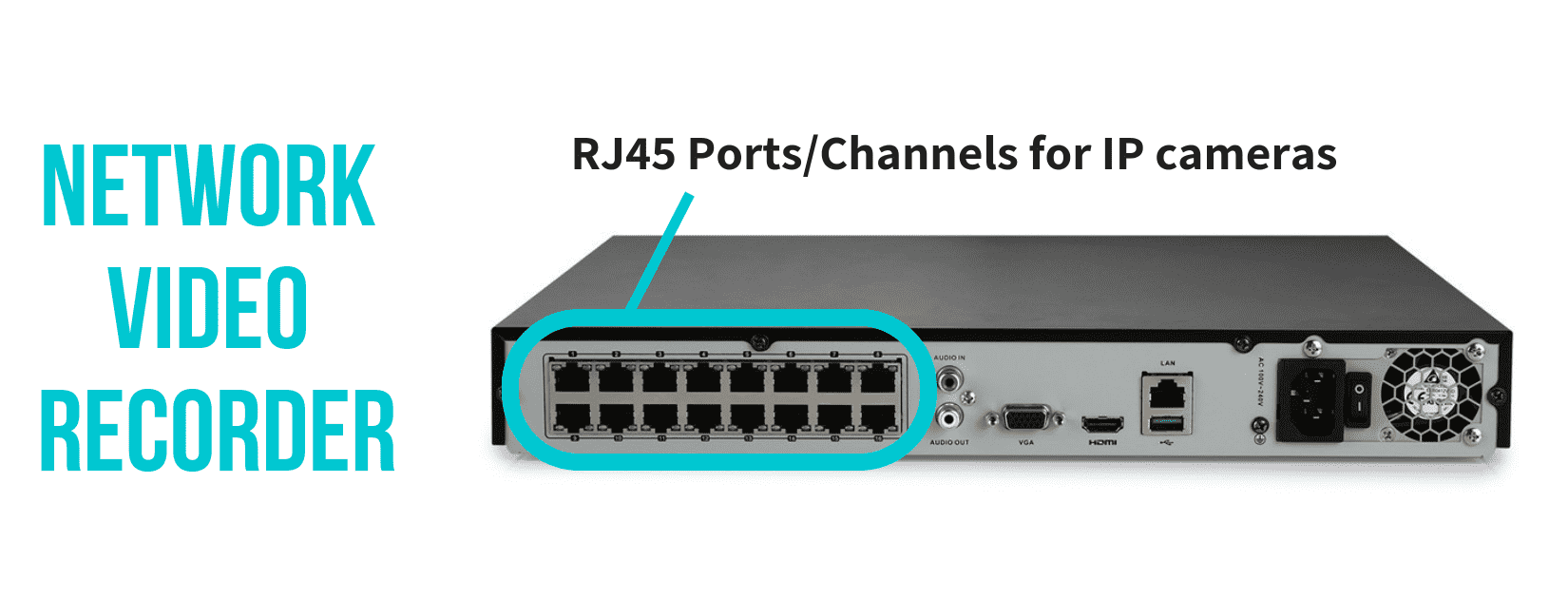
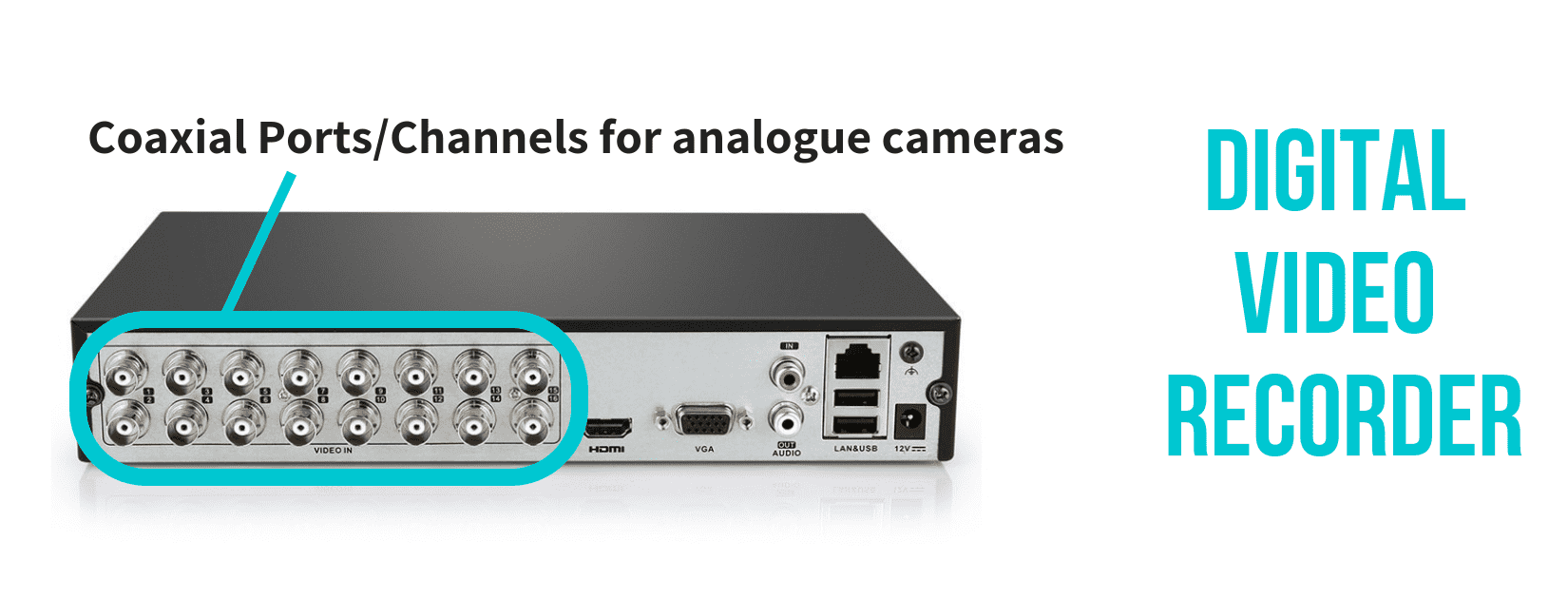
NVRs (Network Video Recorder) and DVRs (Digital Video Recorder) are the devices that one uses to maintain, view, and reserve surveillance videos captured on your home system.
These are available with several kinds of software and hard drive sizes.
NVRs and DVRs make it easy and straightforward to store and examine videos. These are the successors to the VHS tape recorders.
It is essential to understand the difference between a DVR and a NVR when assessing security systems.
The contrast between the two is how they treat video data.
Digital Video Recorder systems process the video data at the recorder.
Network Video Recorder systems encode and process the video data at the camera, then stream it to the Network Video Recorder, which is then used for storage and remote viewing.
What cameras are used with NVRs and DVRs systems?
Most Network Video Recorders are used with IP cameras.
Digital Video Recorders are typically used with analogue cameras.
It is crucial to understand that a Digital Video Recorder based system is a wired security system.
The Network Video Recorder systems can be a wired or wireless system.
Network Video Recorder is less flexible than its Digital Video Recorder security systems counterpart when it comes to camera type capabilities and mounting possibilities.
Network Video Recorders and Digital Video Recorder have the identical job of collecting and saving surveillance videos.
They are intended to work with various types of cameras.
Learning about cables for surveillance systems
Another important element to understand when setting up a home surveillance system is the types of cables used.
Security camera cables can be one tricky part of installing a surveillance system.
The kind of security camera cable the system will need will depend entirely on what kind of system it is and the performance you are after.
An analogue system or an IP system will use different types of cables.
Cables used for IP Security Camera Systems
When setting up an IP security camera system, one needs to power the security cameras. Then connect them to the network.
Using CAT5 or CAT5e (or higher) Ethernet network cables can achieve both these tasks.
The cable concurrently sends video and audio to the Network Video Recorders and gives power to the camera.
Through this network connection, one can obtain, maintain, and observe security cameras.
Ethernet cables also have a subsequent function.
With Power over Ethernet (PoE) switch, Ethernet cables can link your security cameras to power.
With this method, only one cable runs to and from your security cameras.

Cables for Analogue Security Camera Systems
For an analogue security camera system, one needs RG-59 Siamese cables to send power to and receive video from security cameras.
When in an analogue system, one can still use Ethernet network cables.
One, however, does not need to connect analogue or HD-TVI security cameras to network.
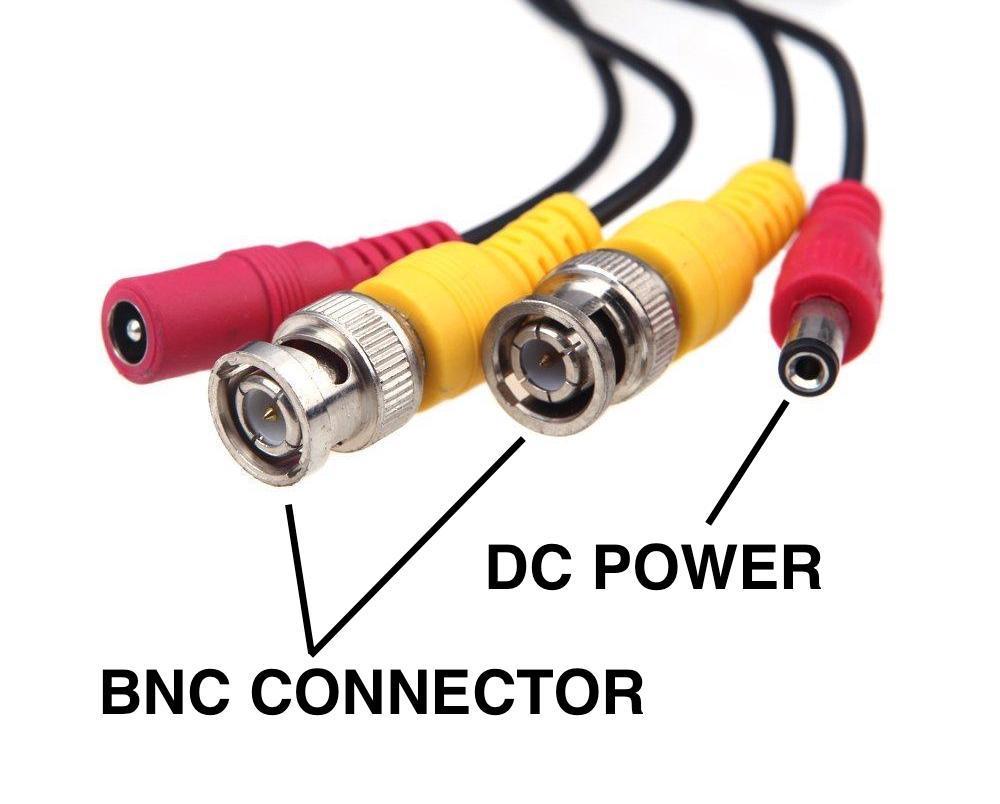
Video storage for video surveillance:
Abundant storage space is vital when it comes to storing video surveillance footage.
Surveillance hard disk drives
Video surveillance footage is saved on conventional hard disk drives created and built specifically for use with surveillance systems.
They can be installed in NVR or DVR.
Cloud Storage for video surveillance
Network Video Recorder security systems have the option of cloud recording, which eliminates the requirement for on-site storage.
This also lets your service provider do the storage on their servers.
A possible disadvantage of cloud storage is that it can be expensive.
Cloud storage has also been criticized, as it is susceptible to hacking.
Memory cards
One can also use memory cards to store video surveillance
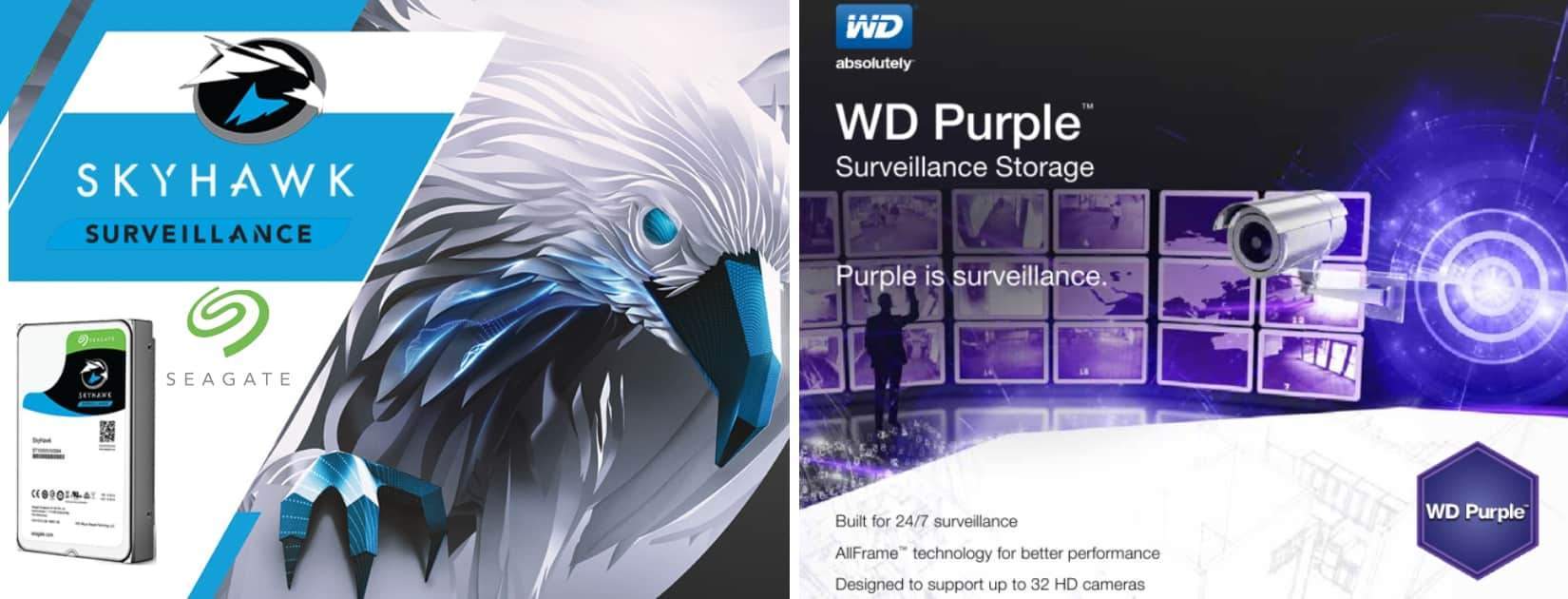
Making the best choice:
With advances in technology, these days home security cameras come with a lot of great features and are all that expensive when considering the benefits they offer.
With that said, when searching for the best security cameras there will be a plethora of choices.
Even tech savvy individuals can become overwhelmed by the number of choices.
Therefore, here is a checklist to give an idea about some essential features to look for when choosing the right home security camera system:
- Weatherproof: The security camera may need video coverage in outdoor areas like the front gate, parking area, or garage.
In regions where the climate can be especially severe, security camera systems that are weatherproof are a must-have.
Their housings protect the cameras from the elements and potential vandals.
Source: https://www.securityinformed.com/white-papers/extreme-weatherproof-in-surveillance-cameras.html
- Remote access: One characteristic that is crucial in a camera is one that can be accessed remotely.
To make the most out of surveillance cameras, being able to view video feed and stored footage on-demand is essential.
The best security cameras allow us to seize the movement in action, from anywhere and at any time from your laptop, smartphone, or tablet.
They can alert you of any suspicious activities that are detected so you can alert authorities anytime/anywhere.
- Infrared ability: This is especially critical for outdoor security cameras.
Observing your property during the day is important, equally so, is being able to have your property in check during the night.
Cameras with infrared ability come with in-built features that allow them to obtain images in total darkness.
These usually come equipped with some extra features such as pan-tilt-zoom too.
- High-resolution: The resolution of the camera can be the difference between grainy, blurry coverage that hides important events and suspects and high-resolution images and videos that let you distinctly recognize people in an unfortunate situation like a burglary.
A high-resolution video surveillance technology ensures better security.
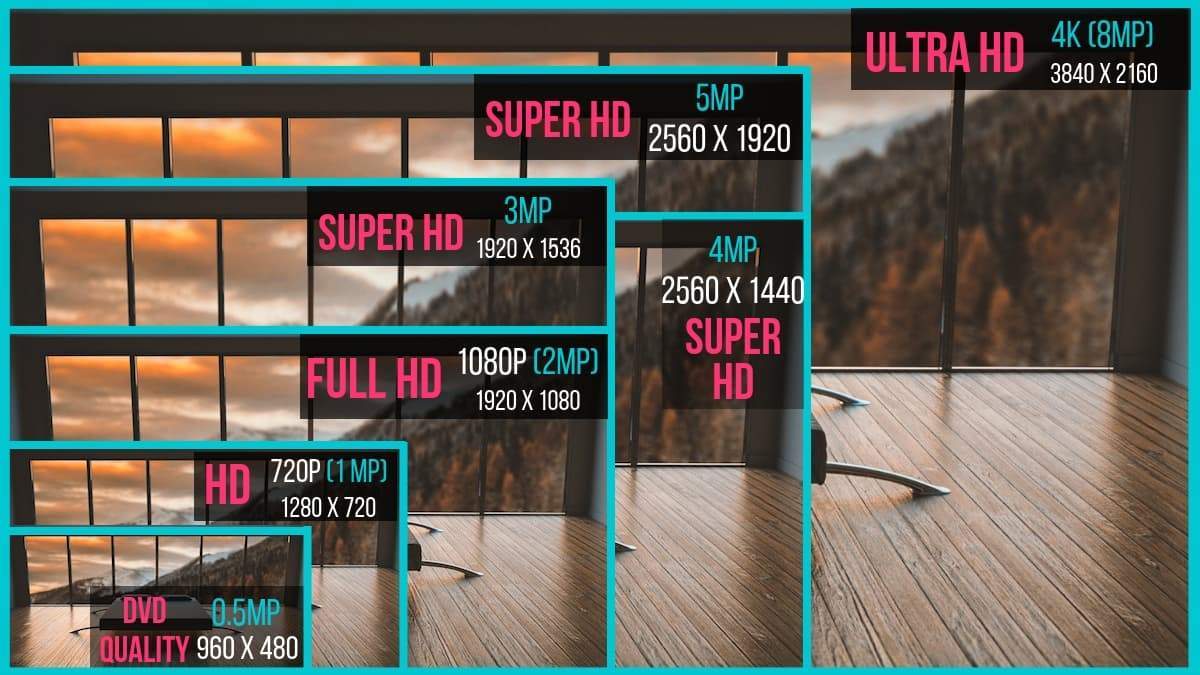
- Wireless: The best cameras are the ones that can transfer the video recording wirelessly without deteriorating the quality.
Wireless security camera systems normally come with remote systems.
They are notably easy to install too.
Wireless capability also allows you to combine several smart home gadgets.
Conclusion
The information above is aimed at providing you with all you need to navigate the various considerations when buying a home security and surveillance systems.
The significance of sufficient safety measures for homes cannot be emphasized enough.
A CCTV camera is an addition and an exceptional way to keep home and family more secure.
The best home surveillance systems nowadays are uncomplicated to use and reasonably inexpensive.
Make the best choice for your home safety today! And here are some other articles to help.
Surveillance-related product reviews:

